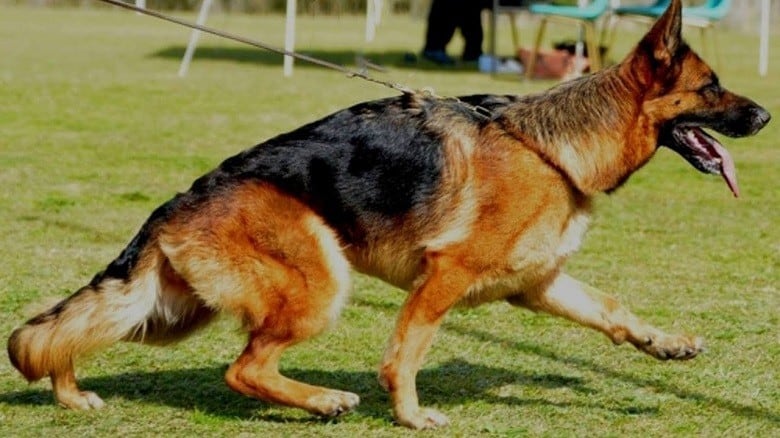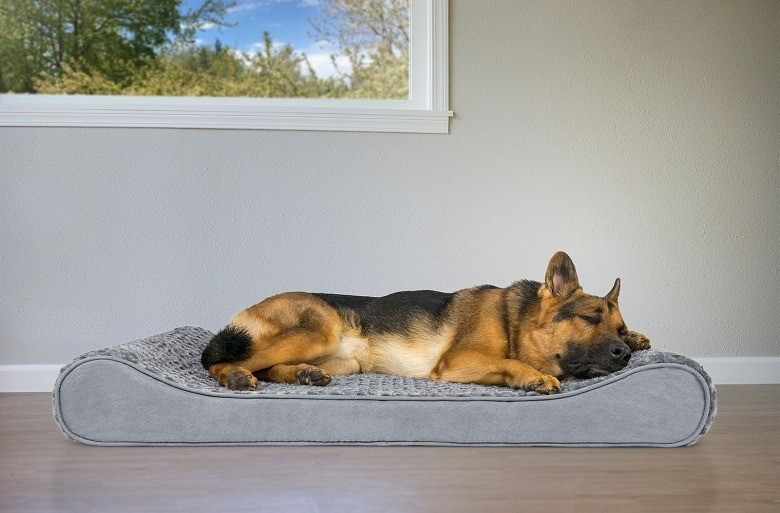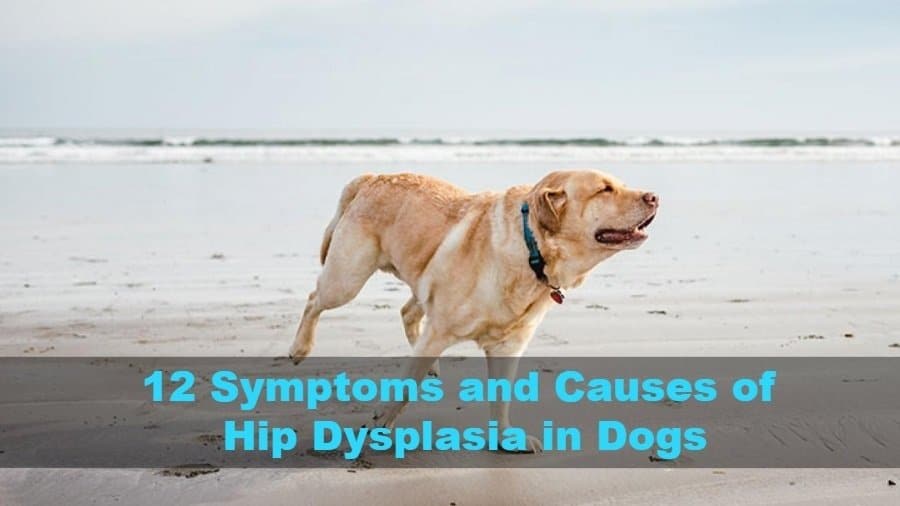Canine hip dysplasia is something that many owners of large dogs will have to deal with at some point, but this common skeletal condition can also be prevalent in smaller breeds as well.
No dog is immune to the debilitating symptoms of hip dysplasia, so as owners the best thing we can do is be educated on how to spot the signs.
There are many things that can lead to canine hip dysplasia and it’s not just about the size of your dog as we once believed.
Anything we can do to prevent it will help, and knowing the common symptoms that could indicate our dogs are suffering is the best way to get on top of this condition and minimize the suffering for our pets.
Thankfully, there are many resources out there for this exact condition and being able to stop the symptoms has never bee easier.
With this guide you’ll be able to keep an eye on your canine friend and get them the help they need the moment you suspect something might be wrong, ensuring them a far better quality of life.
What is Hip Dysplasia?
Dogs are complex creatures just like humans, and their many bones and joints can start to suffer over time.
Canine hip dysplasia is a skeletal condition that affects the hip joints specifically, and whether it’s due to their age or other factors, this joint can start to deteriorate and cause serious problems.
The hip joint in your dog is like a ball and socket, and when a dog gets this condition it means the ball and socket has failed to fit together correctly or develop as it should.
When it doesn’t fit smoothly, the ball and socket can grind and rub against each other and wear down over time, eventually leading to total deterioration and loss of function.
A dog with serious hip dysplasia will struggle through many normal facets of life and it can be hard for owners to witness.
Therefore, learning about the common causes, symptoms to be mindful of, and possible treatments for dogs with this condition, we can be better prepared for the sake of our dogs and their health and happiness.
Common Causes of Canine Hip Dysplasia

Canine hip dysplasia was once a condition reserved for just larger breeds of dogs, as medical experts thought this was the key cause of it.
Today we know that larger dogs are definitely more susceptible to it, but it can strike dogs of all ages and sizes, which is why we need to be vigilant and educated as their owners.
The most common causes of hip dysplasia in dogs is genetics as this is a hereditary condition. It gets passed down through generations and is usually found in larger breeds like Great Danes and German Shepherds.
Due to their larger size, more pressure is put on the hip joint and other bones which leads them to be more susceptible, especially if there’s a history of their condition in their bloodline.
Other things can cause hip dysplasia, and a dog with a genetic predisposition to the condition will need to be extra mindful of these.
Being overweight for their breed and age as it can put extra strain on their joints.
Excessive and rapid growth due to poor diet choices, preventing the joints from developing slowly over time as they should.
Poor nutrition choices that don’t meet the dietary requirements needed for larger dogs who are already susceptible to hip dysplasia.
Performing the wrong types of exercise or not giving your dog regular exercise at all.
The 12 Symptoms of Hip Dysplasia in Dogs
Most people make the mistake of thinking that hip dysplasia only starts to show up in a dog’s older years, but according to the American Kennel Club it can start showing symptoms as early as four months old.
The number of symptoms they show or the severity of them will depend on how serious the condition is and how long they’ve suffered with it for, but these are the 12 symptoms that all dog owners should be aware of.
Some of these signs on their own don’t necessarily indicate that a dog has hip dysplasia, but if you have noticed a few of them then it’s a good idea to get your dog checked out. Y
Younger dogs could be experiencing hip dysplasia at just a few months of age and older ones could have the condition in relation to osteoarthritis or other conditions, so it’s always a possibility.
Diagnosing Hip Dysplasia in Your Pet
Regular checkups with your vet are the best way to care for them but if you notice any of the common symptoms it’s best to mention these immediately.
The sooner you can get their hip dysplasia treated the better, as there are things you can do to reduce the symptoms and make their lives a lot easier.
If your vet performs a physical check and agrees that there are signs of hip dysplasia, they will usually start with manipulation of the dog’s legs.
This can check whether or not they have pain, are experiencing grinding of the joints, or feel stiff. From there, they might perform additional testing like taking blood specimens and gathering other information about your pet that can lead to a diagnosis.
Sometimes an x-ray will be taken of their hips so that the vet can see how serious the condition is and confirm that this is what’s been causing the problems.
This can also rule out issues resulting from injury or other inflammation so the correct treatment can be given. If canine hip dysplasia has been established, they’ll be able to suggest a range of treatments that can help and give you some suggestions about how to ease their symptoms.
How to Help Your Dog
The good news about hip dysplasia is that there is a range of treatment options to help with the condition.
How can you help?
How can dog ramps help your dog suffering from hip dysplasia?
This is why it’s essential to get them checked out at the very first sign so you can minimize its progression and hopefully slow down the deterioration of their hip joints.
Depending on the severity of their hip dysplasia and how long it’s been present, the treatment options can be as simple as making lifestyle changes like their diet and bedding, or as serious as surgery. These are a few things you can expect from your vet to treat the condition:
Taking Care of Man’s Best Friend

While it’s impossible to completely prevent this skeletal condition from occurring, there are many ways you can reduce the chances or lessen the impact.
Ensuring you give your dog a healthy lifestyle with regular exercise, foods made for their breed and size, and keeping a constant eye on their health will all give them a better chance.
The more we learn about these skeletal conditions and how they affect our pets, the easier it will be to slow them down.
Larger breeds of dog or those with a genetic predisposition might be harder to prevent, but there’s still plenty that we can do to reduce the likelihood.
Canine hip dysplasia is an unfortunate part of pet ownership and seeing your dog suffer from the symptoms can be heartbreaking.
Anything we can do to prevent it, like healthy food choices and comfortable and supportive bedding, our dogs deserve to get.
Just as we need to be mindful of our own health and keep an eye on potentially worrying symptoms, so too do we need to do the same for our dogs.

